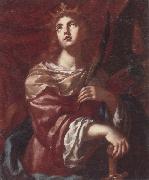Wholesale Oil Painting No Minimum |
|||||||||||
|
|
|||||||||||

|
|||||||||||
|
|
|
||||||||
Dante Gabriel RossettiEnglish Pre-Raphaelite Painter, 1828-1882 Rossetti's first major paintings display some of the realist qualities of the early Pre-Raphaelite movement. His Girlhood of Mary, Virgin and Ecce Ancilla Domini both portray Mary as an emaciated and repressed teenage girl. His incomplete picture Found was his only major modern-life subject. It depicted a prostitute, lifted up from the street by a country-drover who recognises his old sweetheart. However, Rossetti increasingly preferred symbolic and mythological images to realistic ones. This was also true of his later poetry. Many of the ladies he portrayed have the image of idealized Botticelli's Venus, who was supposed to portray Simonetta Vespucci. Although he won support from the John Ruskin, criticism of his clubs caused him to withdraw from public exhibitions and turn to waterhum, which could be sold privately. In 1861, Rossetti published The Early Italian Poets, a set of English translations of Italian poetry including Dante Alighieri's La Vita Nuova. These, and Sir Thomas Malory's Morte d'Arthur, inspired his art in the 1850s. His visions of Arthurian romance and medieval design also inspired his new friends of this time, William Morris and Edward Burne-Jones. Rossetti also typically wrote sonnets for his pictures, such as "Astarte Syraica". As a designer, he worked with William Morris to produce images for stained glass and other decorative devices. Both these developments were precipitated by events in his private life, in particular by the death of his wife Elizabeth Siddal. She had taken an overdose of laudanum shortly after giving birth to a stillborn child. Rossetti became increasingly depressed, and buried the bulk of his unpublished poems in his wife's grave at Highgate Cemetery, though he would later have them exhumed. He idealised her image as Dante's Beatrice in a number of paintings, such as Beata Beatrix. These paintings were to be a major influence on the development of the European Symbolist movement. In these works, Rossetti's depiction of women became almost obsessively stylised. He tended to portray his new lover Fanny Cornforth as the epitome of physical eroticism, whilst another of his mistresses Jane Burden, the wife of his business partner William Morris, was glamorised as an ethereal goddess. |
||||||||
|
|
||||||||
Saint Catherine
Saint Catherine Painting ID:: 3590 |
1857 1857 |
|||||||
|
|
||||||||
Fernando YanezSpanish 1489-1536 Fernando Yanez Gallery |
||||||||
|
|
||||||||
|
|
Saint Catherine
Saint Catherine Painting ID:: 19147 |
undated, oil on panel, Museo del Prado at Madrid undated, oil on panel, Museo del Prado at Madrid |
||||||
|
|
||||||||
|
|
||||||||
|
|
Saint catherine
Saint catherine Painting ID:: 27535 |
mk56
oil on canvas,unframed
Circle of Pietro Dadini
mk56 oil on canvas,unframed Circle of Pietro Dadini |
||||||
|
|
||||||||
CaravaggioItalian Baroque Era Painter, ca.1571-1610 Italian painter. After an early career as a painter of portraits, still-life and genre scenes he became the most persuasive religious painter of his time. His bold, naturalistic style, which emphasized the common humanity of the apostles and martyrs, flattered the aspirations of the Counter-Reformation Church, while his vivid chiaroscuro enhanced both three-dimensionality and drama, as well as evoking the mystery of the faith. He followed a militantly realist agenda, rejecting both Mannerism and the classicizing naturalism of his main rival, Annibale Carracci. In the first 30 years of the 17th century his naturalistic ambitions and revolutionary artistic procedures attracted a large following from all over Europe. |
||||||||
|
|
||||||||
|
|
Saint Catherine
Saint Catherine Painting ID:: 30531 |
mk68
Oil on canvas
5'8"x4'4 1/4"
Madrid,Thyssen-Bornemiszxa Museum
1595-1596
Italy
mk68 Oil on canvas 5'8"x4'4 1/4" Madrid,Thyssen-Bornemiszxa Museum 1595-1596 Italy |
||||||
|
|
||||||||
Bernardino Lanino(1512 -1583 ) - Painter |
||||||||
|
|
||||||||
|
|
Saint Catherine
Saint Catherine Painting ID:: 96561 |
between 1527(1527) and 1531(1531)
Medium Oil on
cyf between 1527(1527) and 1531(1531) Medium Oil on cyf |
||||||
|
|
||||||||
|
Bernardino Lanino (1512 -1583 ) - Painter Saint Catherine between 1527(1527) and 1531(1531) Medium Oil on cyf |
||||||||
|
|
||||||||
|
Prev Next
|
||||||||
|
|
||||||||
|
Related Paintings to Bernardino Lanino :. |
||||||||
|
|
||||||||
|
CONTACT US |





